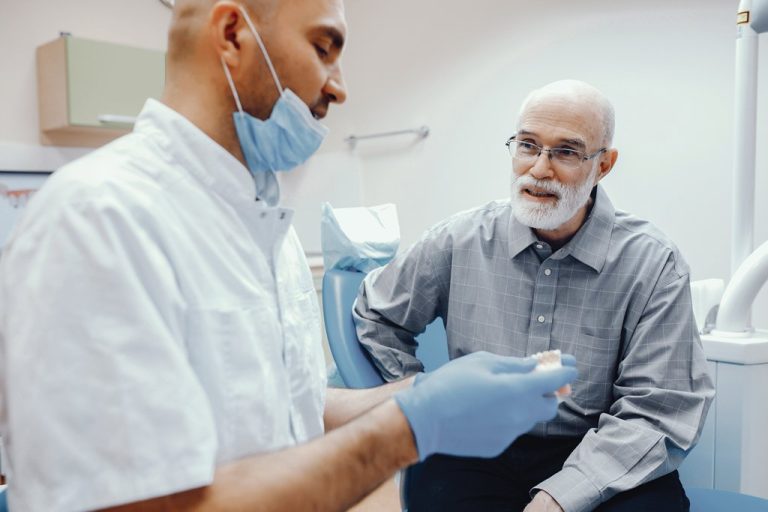Estimated reading time: 5 minutes

A radical redesign of the oral implant offers new hope to patients with missing teeth and reduced bone volume. By Tracey Porter
Any oral health professional who has had to deal with a patient with missing teeth and compromised healing is all too familiar with the challenges presented in these types of cases.
Forced to choose between major implant procedures or struggling with unstable removable prostheses, usually neither the patient nor the practitioner is happy with the resulting oral health outcome.
Vertical bone grafting is often described as difficult and unpredictable, and alternatives such as distraction osteogenesis usually prove prohibitive with few centers offering this program of care.
Help may soon be on the way, however, as a team from the University of Melbourne (UoM) is developing a new dental implant that provides a more stable tooth replacement option.
Twelve years in the making, the device—dubbed the Rectangular Block Implant, or RBI for short—provides the same surface for integration, eliminating the need for a problematic vertical graft.
UoM Associate Professor (Prosthodontics) Roy Judge, one of the device’s three inventors, says the RBI is made of pure titanium and unlike its more traditional contemporaries, is mounted in a horizontal orientation.
While traditional dental implants are drilled straight into the jaw, the difference with the RBI is that the implant has a long horizontal base to use less vertical height.
As the first of its type to be designed and manufactured in Australia, the secret behind the RBI is that it makes the most of the bone volume the patient still has, while minimizing risk to the nerves and veins in their jaw patient.
It also maximizes force distribution to give patients a better chewing experience.
A conventional cylindrical dental implant requires finite bone height and width to achieve primary stability. This is not always amenable in situations where the tooth has been missing for a significant period of time.
A/Prof Roy Judge, Co-Inventor, RBI
A/Prof Judge says it is particularly effective in patients with long-term missing posterior teeth and those with resorbed alveolar ridges.
Ask any oral health professional and they will tell you that missing teeth can be replaced in many ways, including removable partial or full dentures, bridges on prepared teeth, bridges attached to teeth, and dental implants.
But as everyone knows, dental implants – which have been used to replace missing teeth in clinical dental practices since the 1980s – work best when there is healthy bone to anchor the implant to during the post-healing phase. place.
“A conventional cylindrical dental implant requires a finite height and width of bone to achieve primary stability,” says A/Prof Judge. “This is not always amenable in situations where the tooth has been missing for a significant period of time.”
He says 1.5mm of bone is usually required around all aspects of the implant to ensure stability and blood supply to the healing surfaces.
In cases where there is reduced bone volume, the lack of blood supply reduces predictable healing outcomes while reduced stability means there is increased micromotion across the bone-implant interface resulting in unfavorable fibrous union as opposed to osseointegration of the implant to the bone.
“Some patients do not have enough healthy bone in their jaw as a result of losing it through trauma or diseases such as oral cancers, while others have a deficit due to having their teeth extracted years ago,” says A/Prof Judge.
Patients with impaired bone healing have a reduced chance of success, he adds. “These will include patients who currently smoke, have uncontrolled diabetes, have had radiation to the head and neck, or are taking certain medications to help manage osteoporosis.”
A/Prof Judge says dental implants that have a fixed tooth replacement option when placed in the back of the mouth results in patients regaining the ability to chew food effectively thereby improving digestion.
Some patients do not have enough healthy bone in their jaw as a result of losing it from trauma or diseases such as oral cancers, while others have a deficit due to having their teeth extracted years ago.
A/Prof Roy Judge, Co-Inventor, RBI
Implants placed in the anterior regions can support tooth replacements similar in dimension and aesthetic appearance to natural teeth, he says.
“Having confidence in your smile is an important part of socialization and helps with job opportunities and other milestone achievements.”
A/Prof Judge explains that the RBI came about because he and his fellow inventors, dental surgeon Dr Tim Gazelakis and physicist Joseph Palamara, recognized that with one in 10 patients missing teeth that cannot be helped by current implants in market, conventional implants were clearly not an option for everyone.
The RBI team faced many hurdles to get the project to this stage of development, including the impact from COVID-19, as well as the numerous ethics clearances required to advance both animal and human studies.
However, the design of the rectangular block implant has been constant since the original CAD drawings 12 years ago, says A/ Prof Judge, with the matching surgical tip providing the rectangular osteotomy the main thing that has changed since the development of the first prototype .
While the sites the team are working on are among the most difficult to deal with both masticatory loads and bone volume, A/Prof Judge says the concept has been “extremely successful in initial animal studies”. In human trials, it has achieved the same level of success as conventional implants.
To date, the development team has successfully placed implants in two patients, both of whom had positive bond and soft tissue responses.
The project has so far attracted funding from the Biomedical Translational Bridge Program as well as a Medical Research Commercialization grant from the University of Melbourne. An Australian Seed Grant Financial Accelerator from the Department of Education will enable the team to work with the Australian manufacturer Signature Orthopedics.
Proof-of-concept clinical trials in humans have recently begun, with the trial being the first step in commercializing RBI.

